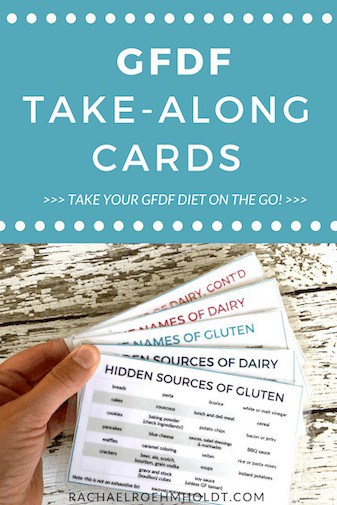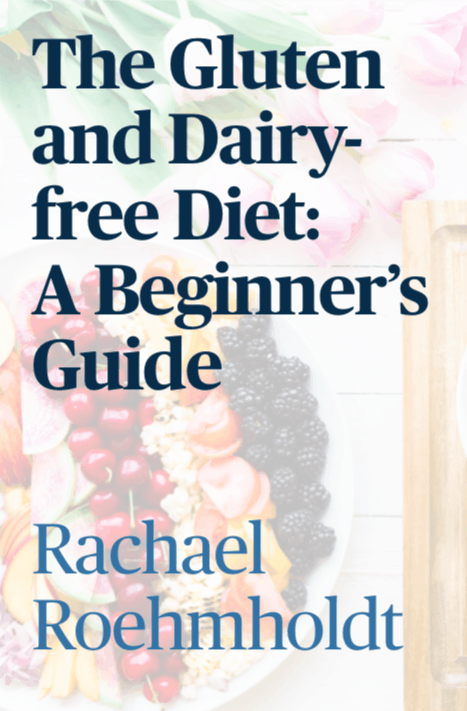Learn how to read ingredient lists to understand exactly what’s in your food. If you have food intolerances or food allergies, this information is vital.
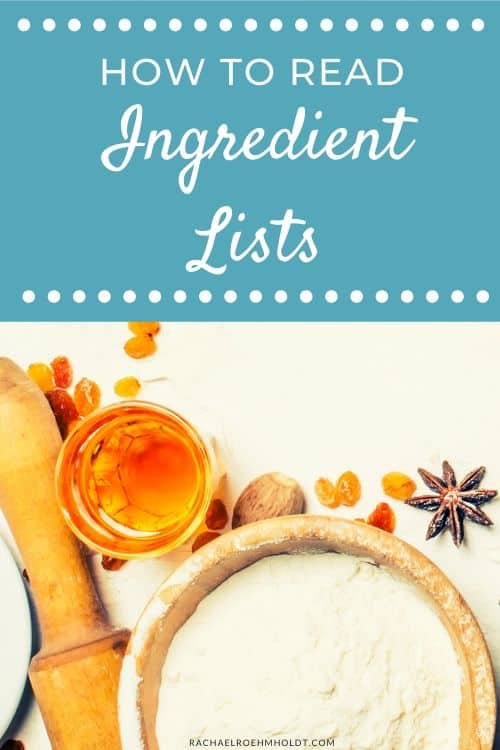
When it comes to making any change in your diet, especially if you have food intolerances, you will need to know what ingredients are in the packaged food products that you buy. The way to learn what ingredients are in each food is to read the ingredient lists of the packaging the food comes in, because the front label of a package might not tell the whole story.
In order to avoid a certain food or ingredient, you need to know if that ingredient is present in the packaged food item. Knowing what ingredients are in a packaged food item will help you make informed decisions about whether or not to purchase that food or to eat it.
When you’re living with food intolerances, learning to read ingredient lists is vital to keeping you on track. You will need to become really good at this in order to navigate the grocery store and be able to choose foods that are safe for your new diet.
There are five important steps to read ingredient lists:
1. Find the ingredient list on a packaged food product.
Most of us know where the ingredient lists are on packaged foods, but if you don’t you can find it either on the side or back of the package. You’ll know you’ve found it when you see a bold font that says “Ingredients:” with a whole bunch of ingredients and other seemingly unfamiliar terms following it.
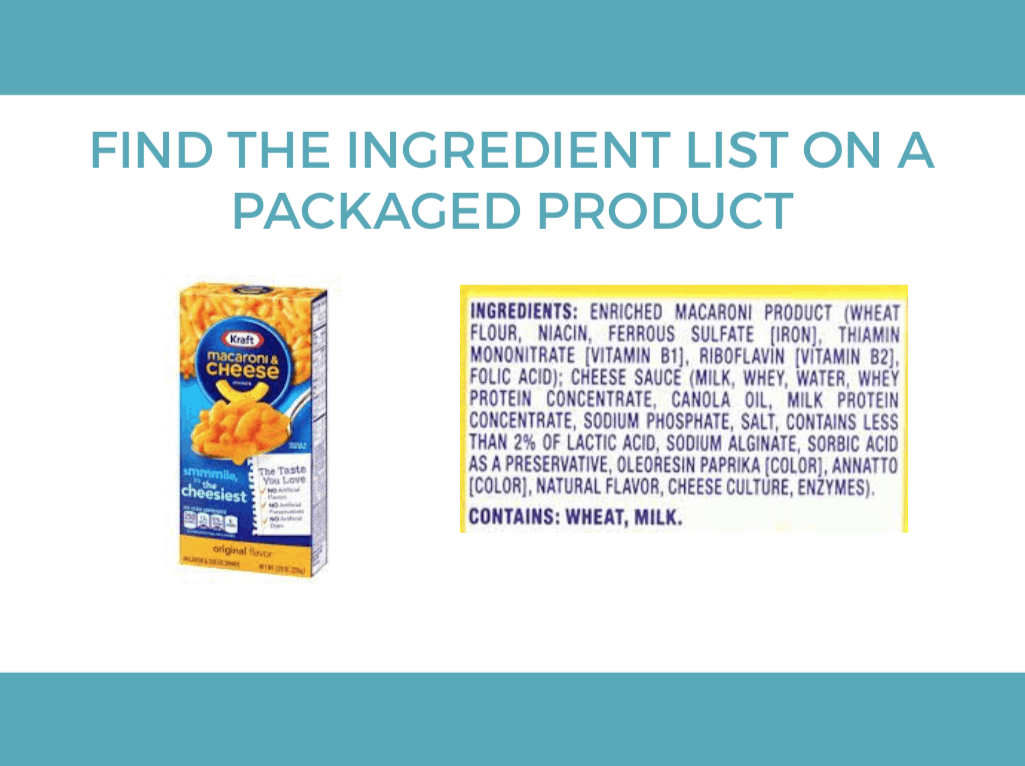
2. Understand that ingredients are listed in descending order of quantity in a packaged food item.
The first item in any ingredient list will be the one that is used the most in the food. The last item in any ingredient list is what is used the least.
For example, if you are holding a box of macaroni and cheese, the first ingredient might be “enriched macaroni product,” because that is what the box contains the MOST of. The last ingredient in this macaroni and cheese ingredient list might be “ascorbic acid” or some other preservative or flavoring, because it contains the LEAST amount in the box.
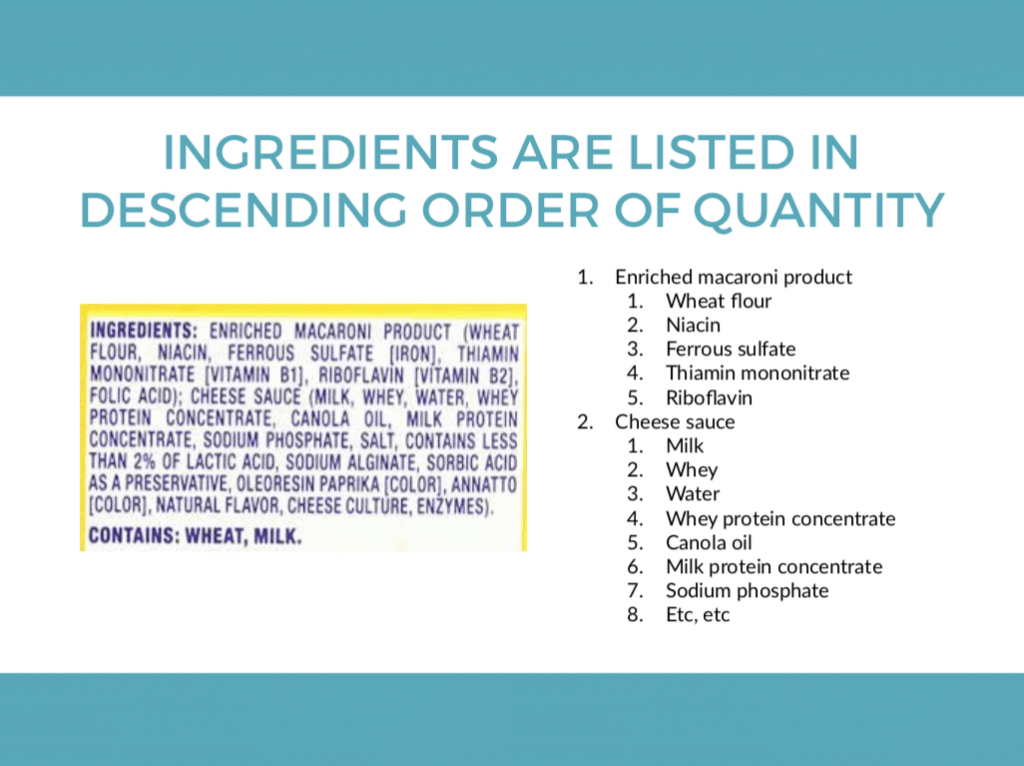
The takeaway here is that when you’re looking at the ingredient list and you want to know what is in the packaged food product, the ingredient with the highest quantity in that product comes first, the lowest quantity comes last.
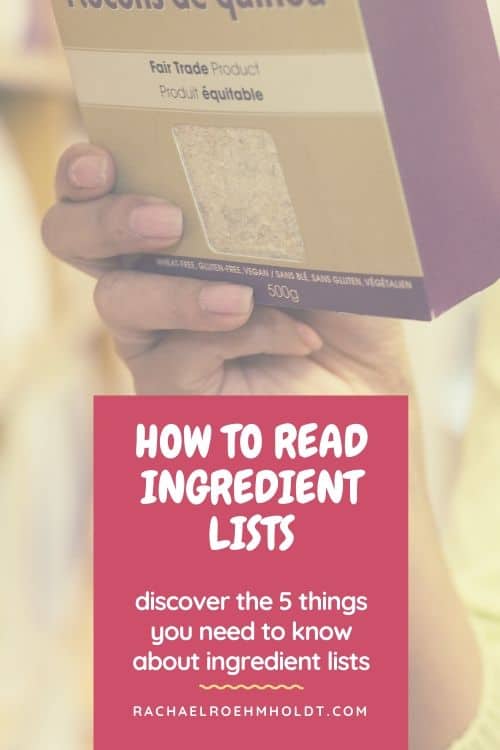
3. Ingredients within ingredients are listed for even more information.
If you’re looking at the ingredient list of a packaged food product and come across an ingredient followed by parentheses and more ingredients, that will tell you what is in that specific ingredient.
For example, let’s say you’re holding that same box of macaroni and cheese. The first item in the ingredient list is “enriched macaroni product,” but you don’t know what’s actually in enriched macaroni product. That’s where these parentheses come in. The ingredient list tells you right there what it’s made of.
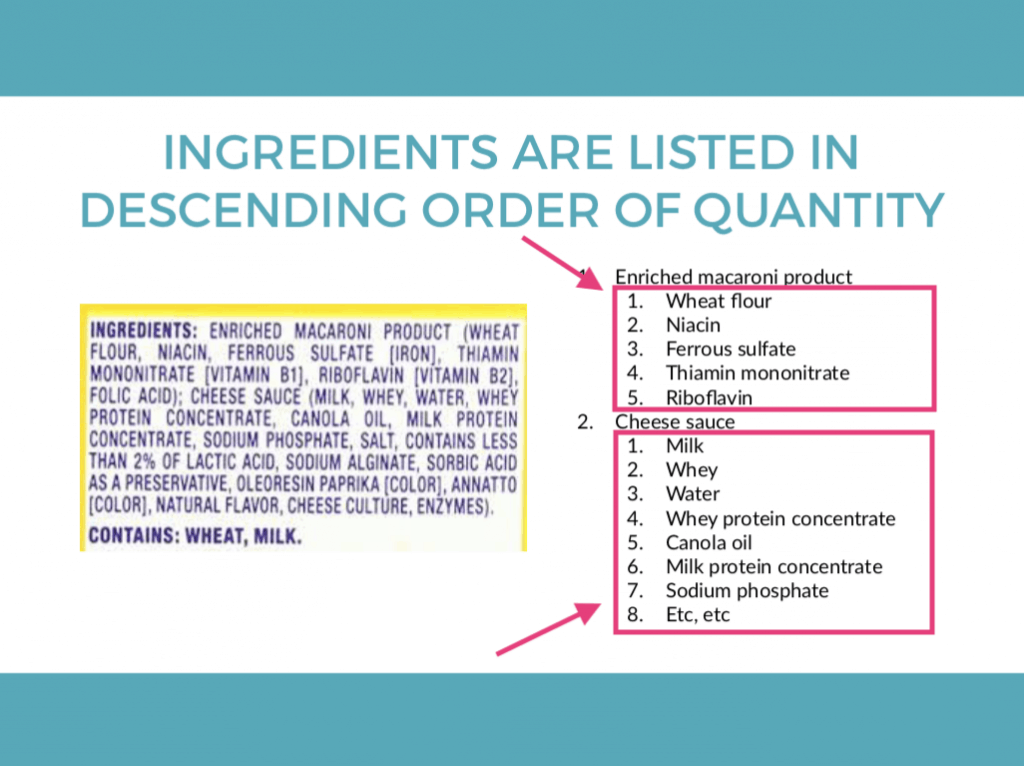
In this example, enriched macaroni product is made from wheat flour, niacin, ferrous sulfate (iron), thiamin mononitrate (vitamin B1), riboflavin (vitamin B2), and folic acid. You know this, because these are the ingredients within the parentheses immediately following the words “enriched macaroni product.” You can also see that within this enriched macaroni product that this product contains the MOST wheat flour and the LEAST folic acid when it was processed, because of the order the ingredients are presented in.
Another thing you can see from this example is that the ingredient list is telling you what the other strange names are that have been added: ferrous sulfate is another name for iron, thiamin mononitrate is another name for vitamin B1, riboflavin is another name for vitamin B2. Now you know that they’ve added iron, vitamin B1, and vitamin B2 to this enriched macaroni product, and you got all that information from just what’s inside the parentheses of the first ingredient in the ingredient list.
4. Many ingredient lists also have “Contains” notes at the bottom to help you quickly identify certain allergens.
Many products come with packaging that give notes about what top allergens are present in that specific food product. The ingredients that are most commonly noted after ingredient lists are the top 8 foods that many people are commonly allergic to.
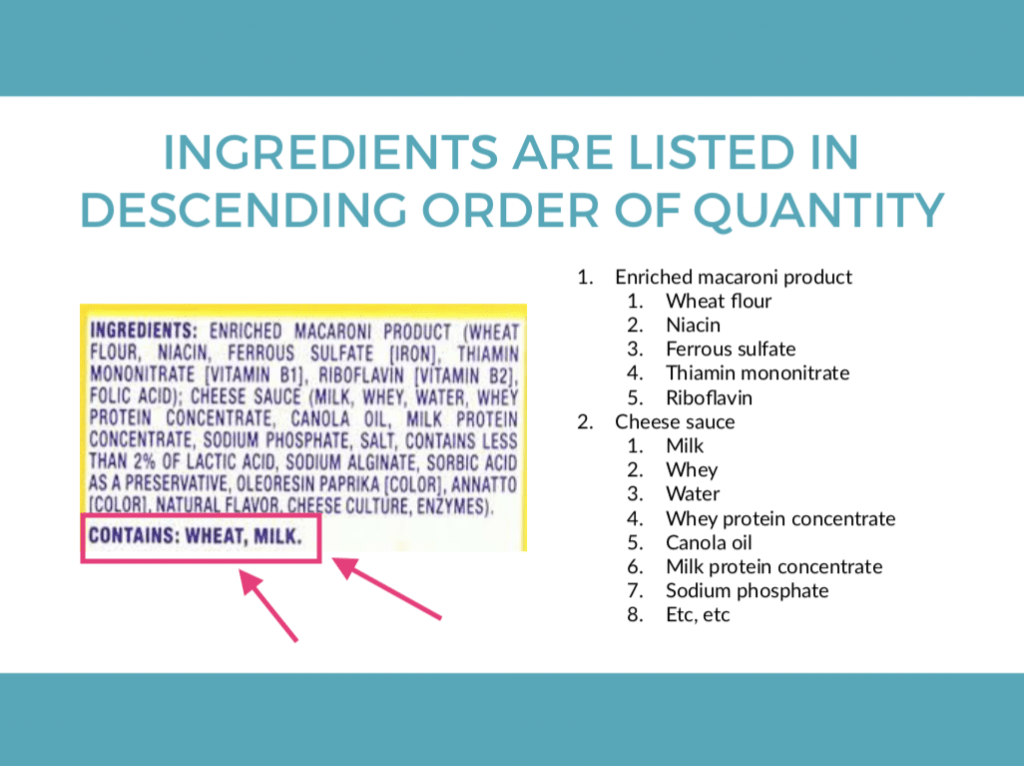
The top 8 allergens are: wheat, dairy, eggs, peanuts, tree nuts, fish, shellfish, and soy.
Each of these allergens might have dozens of different names that they “hide” under after being processed in facilities, which means you’ll need to do detective work to find the ingredients you’re looking for if you wish to avoid them. These “Contains” notes underneath an ingredient list might help you shortcut your time by simply listing that it contains milk or dairy products, wheat or gluten products, or any other allergen that you might be avoiding.

5. Know the names of the ingredients that you’re looking for – so you know to avoid them.
Finally, if you wish to avoid a certain food due to a food allergy or food intolerance, you need to know what you’re looking for in the ingredient list. Believe it or not, most processed foods have ingredients that are derivatives of other ingredients, meaning an ingredient list might not say “milk” but it definitely contains dairy under another very science-y term that you wouldn’t know top of mind.
The best tip I can give is to learn the names of whatever food it is you’re avoiding, so that you can be well informed when you are choosing products at a grocery store.
You can do research before you leave the house to identify which ingredients you’re looking for, and you can even print off a list of ingredient names with GFDF Take-Along Cards that will help you be informed when you’re scanning ingredient lists when you get to the store.
When you find that specific ingredient that you’re avoiding, you know that packaged food product isn’t for you, and can go back on the shelf.
When you have food allergies or food intolerances, the best thing you can do is do your research and due diligence when purchasing products if you wish to avoid a specific food entirely.
Don’t rely on food labels (ones that make promises on the front of a package) to give you all the information. They aren’t always 100% accurate, but ingredient lists are more likely to give the facts. Always check ingredient lists and compare them to the lists of ingredients you are planning to avoid before buying any new product.
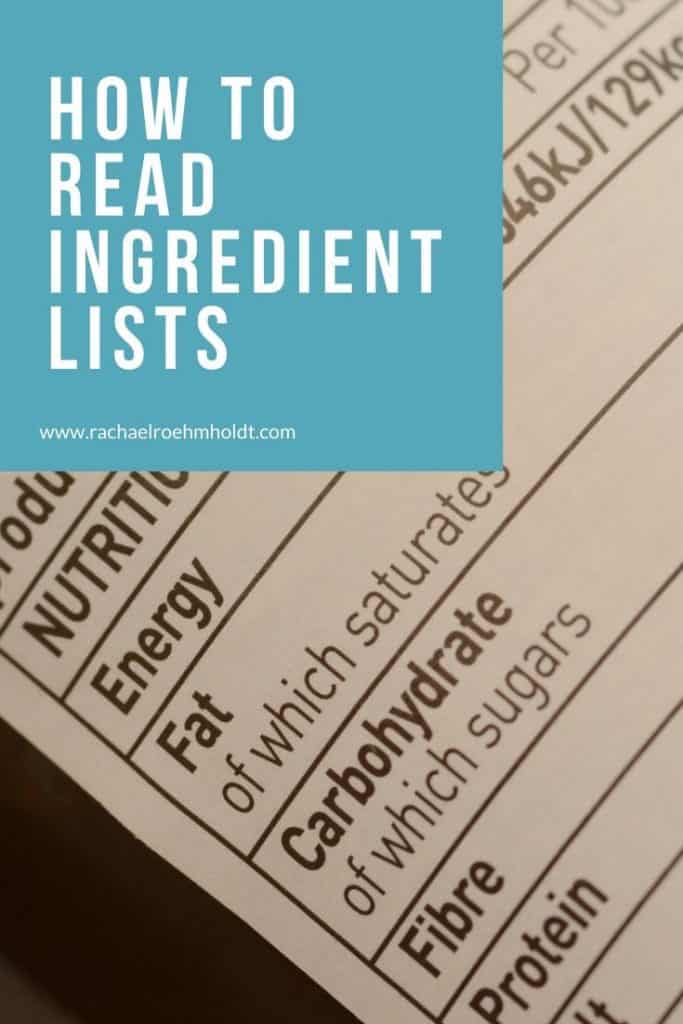
I hope that if you’re new to ingredient lists, that this information has been useful for you. Once you get the hang of reading ingredient lists, you’ll become a lot more empowered in sticking with a new diet that involves food intolerances. This information will also probably open your eyes to just how many foods contain gluten, dairy, sugar, corn syrup, and other top allergens.
If you’d like to learn more about taking on a gluten and dairy-free diet, I highly recommend checking out The Gluten and Dairy-free Diet: A Beginner’s Guide. You can find more information on that here or below.
